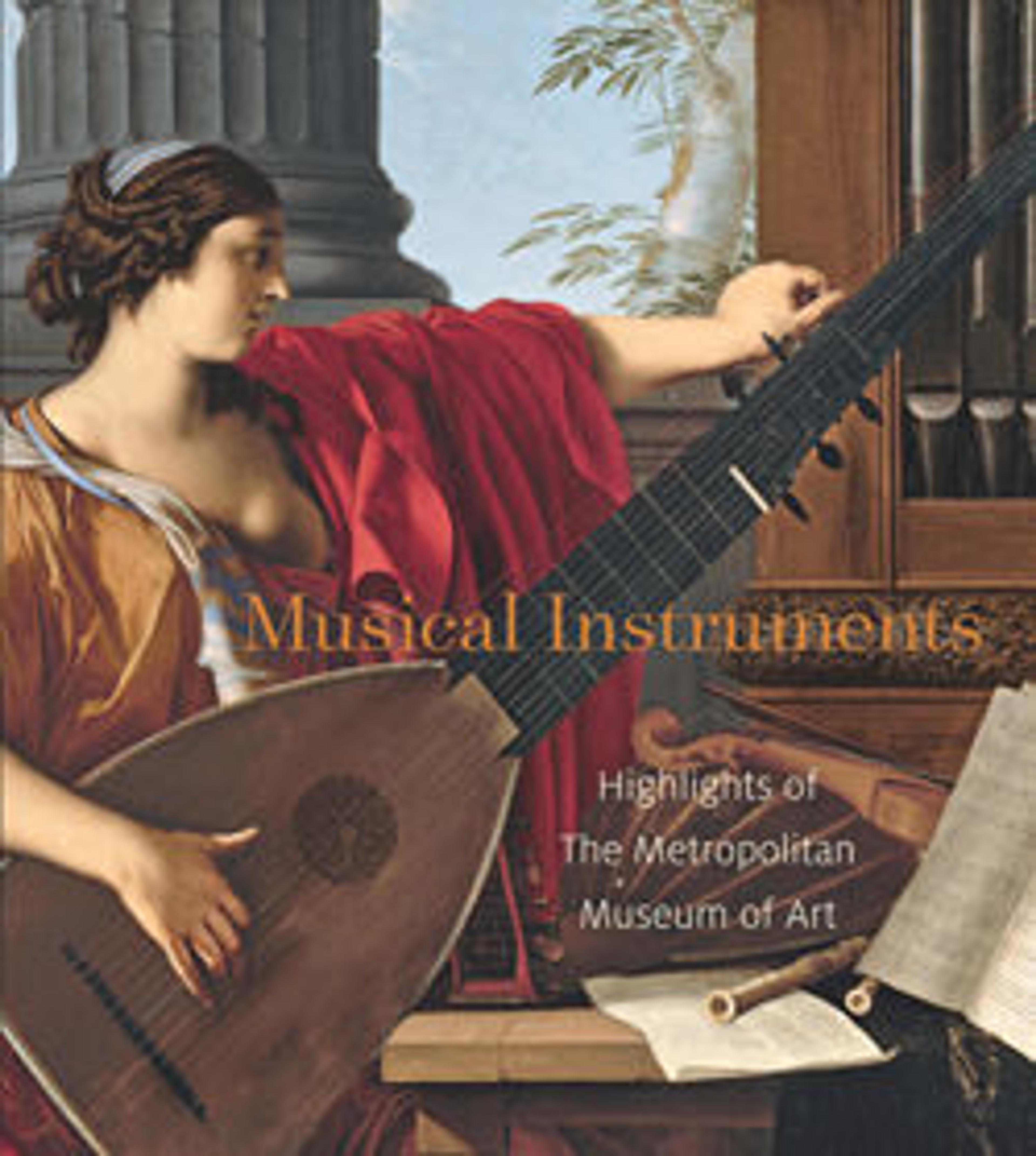Sistrum with a dedication referring to a king
The sistrum was a a sort of rattle, its rustling sound associated in particular with great female goddesses, for instance Tefnut, Hathor, Isis, or Bastet.
Like all Egyptian sistra, this one has the emblem of Hathor/Bat, the frontal head of a female with cow ears, at the juncture of the upper part and the handle. Above the goddess's head, a naos or shrine forms the sound-box. The naos in this instance is not openwork, so that disks could not be strung between the sides of the naos as they usually were. Three holes are provided on each side for the crossbars, however, so possibly the movement of the crossbars within the soundbox created a desirable sound.
Beneath the Hathor emblem are columns of inscription on either side of the handle. Although very difficult to deipher owning to pits and cracks, the insciption includes reference to shaking the sistrum for a goddess - possibly Hathor is named. The inscriptions include cartouches, but these are empty, a fairly frequent phenomenon at this time. The handle is elaborately decorated with bands of ornament - the feather patterns at top and bottom, another imbricated pattern and a checkerboard pattern in between.
Like all Egyptian sistra, this one has the emblem of Hathor/Bat, the frontal head of a female with cow ears, at the juncture of the upper part and the handle. Above the goddess's head, a naos or shrine forms the sound-box. The naos in this instance is not openwork, so that disks could not be strung between the sides of the naos as they usually were. Three holes are provided on each side for the crossbars, however, so possibly the movement of the crossbars within the soundbox created a desirable sound.
Beneath the Hathor emblem are columns of inscription on either side of the handle. Although very difficult to deipher owning to pits and cracks, the insciption includes reference to shaking the sistrum for a goddess - possibly Hathor is named. The inscriptions include cartouches, but these are empty, a fairly frequent phenomenon at this time. The handle is elaborately decorated with bands of ornament - the feather patterns at top and bottom, another imbricated pattern and a checkerboard pattern in between.
Artwork Details
- Title: Sistrum with a dedication referring to a king
- Period: Ptolemaic Period
- Dynasty: Ptolemaic Dynasty
- Date: 332–30 B.C.
- Geography: From Egypt
- Medium: Silver
- Dimensions: H. 29.6 × W. 6.9 × D. 4.2 cm (11 5/8 × 2 11/16 × 1 5/8 in.)
- Credit Line: Rogers Fund, 1958
- Object Number: 58.5a
- Curatorial Department: Egyptian Art
More Artwork
Research Resources
The Met provides unparalleled resources for research and welcomes an international community of students and scholars. The Met's Open Access API is where creators and researchers can connect to the The Met collection. Open Access data and public domain images are available for unrestricted commercial and noncommercial use without permission or fee.
To request images under copyright and other restrictions, please use this Image Request form.
Feedback
We continue to research and examine historical and cultural context for objects in The Met collection. If you have comments or questions about this object record, please contact us using the form below. The Museum looks forward to receiving your comments.
